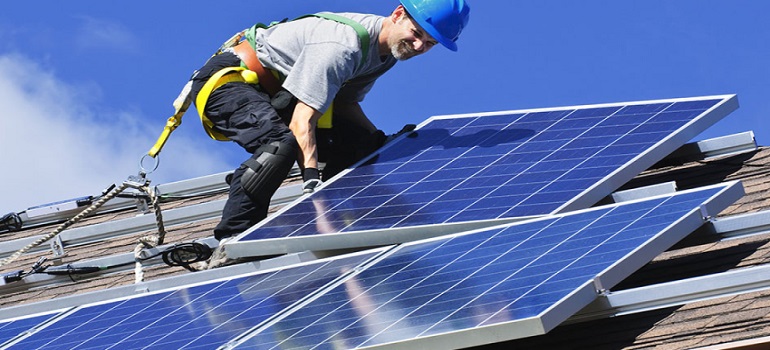 With the release of its new generation of thin-solar embedded Hantile products, Hanergy has taken the next step forward towards realizing its vision of a world in which economic development and the environment exist in harmony.
With the release of its new generation of thin-solar embedded Hantile products, Hanergy has taken the next step forward towards realizing its vision of a world in which economic development and the environment exist in harmony.
While Hanergy’s advances in the thin-film solar industry are well known – it currently holds three world records in the field – many people don’t realize that the company has been a pioneer in clean energy for more than 20 years. In fact, Hanergy was originally known for building the world’s largest privately-owned hydropower station – the Jin’anqiao Hydropower Station, at a total investment of over RMB20 billion (US$3.2 billion). Constructed at an altitude of 2000 meters, the station’s total installed capacity is 3 million KW, generating up to 13 billion KWh on an annual basis.
Based on its early success in developing clean energy, Hanergy set its sights on becoming a global leader in clean energy technology, investing more than US$10 billion to acquire four companies possessing leading thin-film solar technologies. Today, Hanergy is a global champion of clean-energy applications and the undisputed leader in thin-film solar power.
With the recent launch of its upgraded Hantile, which combines thin-film solar panels with traditional roof tiles, Hanergy envisions a new generation of buildings that do not create environmentally damaging emissions by consuming traditional fossil fuels, and actually produce a surplus of clean energy. With each Hantile in use equivalent to planting a single tree, Hanergy is devoted to realizing its vision of a future in which development and a pristine environment are concepts that exist in harmony – rather than conflict – throughout the world.
To further illustrate the environmental impact of a Hantile powered building – for every 100 square meters of Hantile installed on a house or building, the power produced is equivalent to burning 123 tons of coal – meaning that a single “Hantile house” can reduce carbon dioxide emissions by 322 tons, sulfur dioxide by 1045 kg and nitrogen oxide by 910 kg – the equivalent of planting 340 trees.
But to be truly disruptive, a clean energy solution needs to combine environmental enlightenment with true economic value – and this why Hantile is an ideal win-win solution for both people and the planet. For families, Hantile can be a valuable income-producing asset – for example, for a residence of 100 square meters, 8.5 KW of installed Hantile capacity would produce over 306 thousand KWh in a 30-year period, equivalent to approximately RMB 266,000 (US$42,253) as per China’s power rate or twice the original investment.
Overall, if people calculate the income from power generation, material savings, and energy savings, a Hantile investment can be recovered in as little as 7 years – and with a guaranteed lifetime of 25 years, there is a significant upside – both economically and environmentally.
With these clear advantages, the demand for Hantile is booming – and expected to see exponential growth in China and globally. According to third party numbers, by 2022 the market for Hantile is projected to reach RMB 6,300 billion (US$1,000 billion) in China alone, and the global opportunity is expected to exceed RMB 12,600 billion(US$2,001 billion).
And there is much more to come – with global R&D centers in Beijing, Shenzhen, Silicon Valley and Germany, Hanergy is committed to maintaining a fast pace of innovation, constantly creating new world records in thin-film technology, while pushing the boundaries with high-value clean energy applications for businesses and consumers. Last year, Hanergy have made three new world records in the field of thin-film solar energy research and development and the related mass production conversion rate: the mass production conversion efficiency of gallium arsenide single-junction module is now up to 25.1%; the full-area conversion efficiency of copper indium gallium selenide glass-substrated module is now up to 18.72%; the conversion efficiency of flexible sputtering technique champion module is now up to 17.44%.
ALSO READ:
Four stations in Maharashtra turns green, installs solar and wind energy plants
Solar Bankers Uses Blockchain for Solutions in Sustainable Development
Rajasthan targeting to increase its solar power generation to 3,780 MW by April next year


